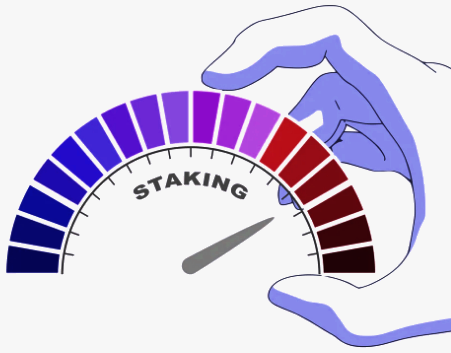Accredited InvestorsAltcoinAnatoli UnitskyAnti-Money Laundering (AML) In CryptoAPIArbitrageArtCoin TokenArticle DirectoryASICAuction Terminology GlossaryBasics of Stock Market InvestingBear MarketBest Crypto Payment Provider In the WorldBitcoinBlockchainBlockchain ConfirmationBlockchain Consensus MechanismBlockchain ForkBlockchain GlossaryBored Ape Yacht ClubBuild a Business That OutperformsBull MarketBuying SkyWay SharesByzantine Fault Tolerance (BFT) ExplainedCasascius CoinCentral Bank Digital Currency (CBDC)Centralized Crypto ExchangeCoinCoinsetCold WalletCollateralCommodity Futures Trading Commission (CFTC)Cross-Chain TechnologyCRUCrypto ExchangeCrypto GlossaryCrypto JokesCrypto Terms to KnowCrypto TickerCryptocurrencyCryptographyCryptojackingCryptounit BlockchainCryptounit GlossaryCryptounit ProgramdApp (Decentralized Application)Dead CoinDecentralized Exchange (DEX)Decentralized Finance (DeFi)Difference Between Bitcoin and EthereumDifferent Ways of Investing MoneyDigital CurrencyDistributed LedgerDo Your Own Research (DYOR)Dollar Cost Averaging (DCA)Dow Jones Industrial Average (DJIA)EncryptionERC-20ERC-721EthereumEvoScentFear Of Missing Out (FOMO)Fear, Uncertainty and Doubt (FUD)Fiat MoneyFNT Fintech CompanyGenesis BlockGlobal Unit PayGlossary of Banking TermsGlossary of Business TermsGlossary of Financial TermsHalvingHODLHot WalletHow Do I Start InvestingHow Rich is Satoshi Nakamoto?How to Create a BlockchainHow to Find Private InvestorsHow to Get Into FintechHow to Program Smart ContractsI Am Thrilled to Be a Part of This Global ProjectInitial Coin Offering (ICO)Initial Public Offering (IPO)Initial Token Offering (ITO)Innovation Basalt TechnologyInnovative Transportation TechnologiesInternational Bank Account Number (IBAN)Investing in Gold Mining StocksInvesting in Gold MiningJagerJoy of Missing Out (JOMO)Know Your Customer (KYC)LedgerLiquidity in CryptocurrencyMaker and Taker Fees in Crypto TradingMarket Capitalization (Market Cap)Meme CoinMetal Credit CardMetaMaskMillenials Now Have Access to Generational WealthMy Best Investment EverNew Digital EvolutionNFT GlossaryOff-Chain TransactionsOn-Chain TransactionsOpen Edition NFTPeer-to-Peer (P2P)Personal Loan GlossaryProbably the Best STO on the MarketProof of Stake (PoS)Real Estate Glossary of TermsReal Estate Investing GlossaryRebase TokenSecurities and Exchange Commission (SEC)Security Token ExchangesSecurity Token Offering (STO)Soulbound Decentralized Identities for Security TokensSoulbound ID Launch by Stobox Proves a SuccessSoulbound TokensStoboxStock Market GlossaryTestimonialsTether Platform and Token (USDT)UnitEx ExchangeUnitsky String TechnologiesUNTBUSDUValidatorWe Started Investing When We Were 25What are Blue Chip NFT?What are Blue Chip Stocks?What are Crypto Assets?What are Crypto Smart Contracts?What are CryptoPunks NFT?What are Digital Assets?What are Digital Collectibles?What are Gas Fees?What are Gas Wars?What are Hashmasks?What are Non Fungible Tokens?What are Non-Sufficient Funds (NSF)?What are Soulbound Tokens (SBT)?What are Stablecoins in Crypto?What are Transactions Per Second (TPS)?What are Utility NFTs?What are Utility Tokens?What Does Burning Crypto Mean?What Does Diamond Hands Mean?What Does Paper Hands Mean?What Does To The Moon Mean?What Does WAGMI Mean?What Happened to Satoshi Nakamoto?What is a 51% Attack?What is a Baby Boomer?What is a Backlink?What is a Banner?What is a Barcode?What is a Bid-Ask Spread in Crypto?What is a Block in Blockchain?What is a Block Reward?What is a Blockchain Address?What is a Blockchain Node?What is a Blockchain Oracle?What is a Blog?What is a Bond?What is a Bot?What is a Broker?What is a Business Accelerator?What is a Cash Cow?What is a Commercial Bank?What is a Commodity?What is a Con?What is a Credit?What is a Credit Limit?What is a Credit Rating?What is a Crypto Airdrop?What is a Crypto Bridge?What is a Crypto Scam?What is a Crypto Token?What is a Crypto Wallet?What is a Crypto Whale?What is a Crypto Winter?What is a Cryptocurrency Public Ledger?What is a Cryptocurrency Roadmap?What is a DAO?What is a Dark Pool?What is a Day Trader?What is a Dead Cat Bounce?What is a Default?What is a Derivative?What is a Digital Credit Card?What is a Fiscal Quarter?What is a Fungible Token?What is a Governance Token?What is a Grace Period?What is a Hard Fork?What is a Hot Wallet?What is a Hybrid Blockchain?What is a Hybrid PoW/PoS?What is a Joint Account?What is a Market Cap?What is a Merkle Tree in Blockchain?What is a Mining Farm?What is a Nonce? What is a PFP NFT?What is a POS System?What is a Prepaid Card?What is a Private Blockchain?What is a Private Key?What is a Public Blockchain?What is a Public Key?What is a Reserve Currency?What is a Ring Signature?What is a Routing Number?What is a Rug Pull in Crypto?What is a Safe Deposit Box?What is a Satoshi?What is a Security Token?What is a Seed Phrase?What is a Shitcoin?What is a Sidechain?What is a Soft Fork?What is a Spot Market?What is a State Bank?What is a SWIFT Code?What is a Tax Identification Number (TIN)?What is a Time Deposit?What is a Transaction Account?What is a Variable Interest Rate?What is a Virtual Assistant (VA)?What is a Virtual Card?What is a Virtual Currency?What is a Visa Card?What is a Whitelist in Crypto?What is a Whitepaper?What is Accounts Payable (AP)?What is AMA in Crypto?What is Amortization?What is an Accrual?What is an ACH Transfer?What is an Actuary?What is an Addendum?What is an Algorithm?What is an Angel Investor?What is an Annuity?What is an Asset?What is an ATM?What is an Atomic Swap?What is an Audit?What is an Avatar?What is an EIN?What is an Embargo?What is an Entrepreneur?What is an IDO (Initial Dex Offering)?What is an Interest Rate?What is an Internet cookie?What is an Investment Bank?What is an NFT Drop?What is an NFT Floor Price?What is an Ommer Block?What is an Orphan Block?What is an Outstanding Check?What is an Overdraft?What is Artificial Intelligence (AI)?What is B2B (Business-to-Business)?What is B2G (Business-to-Government)?What is Bartering?What is Bitcoin Dominance?What is Bitcoin Pizza Day?What is Blockchain Immutability?What is Blockchain Used For?What is BRICS?What is Business-to-Consumer (B2C)?What is C2C (Customer to Customer)?What is Capitalism?What is Catfishing?What is CFD Trading?What is Check Kiting?What is Cloud Mining?What is Communism?What is Content Marketing?What is Decentralization in Blockchain?What is DeFi in Crypto?What is Delisting?What is Depreciation?What is Digital Marketing?What is Diversification?What is Double Spending?What is Dumb Money?What is Dumping?What is Earnings Per Share (EPS)?What is Economics?What is Email Marketing?What is Equity?What is Etherscan?What is Fintech?What is Foreign currency?What is Forex?What is Fundamental Analysis (FA)?What is GameFi?What is Generative Art NFT?What is Gwei?What is Hard Currency?What is Hash Rate?What is Hashing in Blockchain?What is Inflation?What is Initial Game Offering (IGO)?What is Interest?What is Interest Income?What is Mainnet?What is Mastercard?What is Metaverse in Crypto?What is Mining in Cryptocurrency?What is Minting NFT?What is Mobile Banking?What is Money Laundering?What is NFT Alpha?What is NFT Metadata?What is NFT Rarity?What is NGMI Meaning?What is Nominal Interest Rate?What is Online Banking?What is Open-End Credit?What is OpenSea NFT Marketplace?What is Personal Identification Number (PIN)?What is Play-to-Earn?What is Polygon?What is Proof of Authority (PoA)?What is Proof of Work (PoW)?What is Public Key Cryptography?What is Pump and Dump?What is Quantum Computing?What is Refinancing?What is Retail Banking?What is Ripple?What is Sharding?What is Slippage in Crypto?What is Smart Money?What is Solvency?What is Soulbound ID?What is SSL?What is Staking in Cryptocurrency?What is Technical Analysis (TA)?What is Testnet?What is the Ask Price?What is the Better Business Bureau (BBB)?What is the Bid Price?What is the Dark Web?What is the InterPlanetary File System (IPFS)?What is the Gold Standard?What is the Lightning Network?What is the Prime Rate?What is the Sandbox?What is the Secondary Market?What is the World Bank?What is Tier 1 Capital?What is Tokenomics?What is TRC-20?What is Universal Banking?What is Unspent Transaction Output (UTXO)?What is Usury?What is Volatility in Crypto?What is Wash Trading?What is Web3?What is Whisper?What is XRP?What is Zero-Knowledge Proof (ZKP)?Who is Beeple?Who is Satoshi Nakamoto?Who is Vitalik Buterin?Why Tokenization is a Safe HavenWhy You Should Try Your Hand at Trading
Ethereum
- Home
- Blockchain Glossary
- Ethereum
Ethereum has rapidly established itself as a key player in the blockchain and cryptocurrency space. From its humble beginnings, Ethereum has grown to become a leading platform for decentralized applications and token development.

With its powerful smart contract capabilities and robust ecosystem, Ethereum has sparked the imagination of developers, businesses, and investors alike. In this article, we will delve into the world of Ethereum and explore its key features and potential.
What Is Ethereum and How Does It Work?
Ethereum is a decentralized global software platform based on blockchain technology. It is internationally known for its own cryptocurrency, ether (ETH).
Ethereum was created with the goal of being scalable, programmable, secure, and decentralized. It is the blockchain of choice for developers and businesses developing technologies based on it to transform the way many industries work.
Anyone may use Ethereum to design any secure digital technology. It contains a token created to compensate members for activity done in favor of the blockchain, but it may also be used to pay for physical products and services if approved.
It natively supports smart contracts, a key component of decentralized apps. Smart contracts are used in conjunction with blockchain technology in many decentralized finance (DeFi) and other applications.
In 2014 Vitalik Buterin published an introductory white paper explaining his vision for smart contracts and a decentralized application platform, and in 2015, Vitalik Buterin, Gavin Wood, Charles Hoskinson, Anthony Di Iorio, and Joseph Lubin co-founded Ethereum.
Ethereum creators planned to enhance its functionalities beyond what Bitcoin already provided. The main distinction between the two is that Ethereum is programmable, which means that you can create and utilize decentralized applications on the network. The Ethereum blockchain may therefore be programmed to do almost any task.
While both Bitcoin and Ethereum allow you to utilize digital money without the use of an intermediary, Ethereum goes beyond simply being a payment network by providing a marketplace for services such as games, social networks, and, of course, financial services.
Technology
Ethereum makes use of blockchain technology. Every newly generated block receives all of the information stored in each block. An identical copy of the blockchain is distributed throughout the network.
A network of automated systems that obtain a consensus on the validity of transaction information validates this blockchain. The blockchain cannot be changed until the network achieves a consensus. This makes it extremely secure.
Consensus is achieved via the use of an algorithm known as a consensus mechanism. Ethereum employs the proof-of-stake process, in which a network of participants called as validators produce new blocks and collaborate to verify the information contained inside them. The blocks contain information on the blockchain's current status, transactions, and much more.
In mid-September 2022, Ethereum officially transitioned to a proof-of-stake algorithm, which is less expensive and more environmentally friendly than a proof-of-work approach.
Proof-of-stake differs from proof-of-work in that it does not involve mining, which is energy-intensive processing. It employs the Casper-FFG finalization protocol and the LMD Ghost algorithm, which are merged into the Gasper consensus mechanism, which monitors consensus and specifies how validators are rewarded for their efforts or penalized for dishonesty.
To activate their validation abilities, solo validators must stake 32 ETH. Individuals can stake less ETH, but they must participate in a validation pool and share any rewards. A validator generates a new block and attests to the authenticity of the information in a process known as attestation, after which the block is broadcast to other validators known as a committee, who check and vote on its validity.
Gasper detects validators who seek to attack the network. In order to penalize dishonest validators, their staked ETH is burnt and they are removed from the network.
Ethereum owners store their ether in wallets. A wallet is a digital interface via which you may access your ether on the blockchain. Your wallet contains an address, which is analogous to an email address in that it is where users transfer ether, just like an email address. Ether is not actually stored in your wallet. When you begin a transaction, you enter your wallet's private keys like you would a password. Each ether you hold is assigned a private key. This key is required to access your ether.
Ethereum is frequently compared to Bitcoin. While the two cryptocurrencies have many similarities, there are also key differences. Developers refer to Ethereum as "the world's programmable blockchain," portraying it as an electronic, programmable network with numerous uses. In contrast, the Bitcoin blockchain was developed only to support the bitcoin cryptocurrency.
The move to the proof-of-stake protocol, which allows users to confirm transactions and generate new ETH based on their ether holdings, is part of a major update to the Ethereum platform. Previously known as Eth2, this upgrade is now just known as Ethereum. However, Ethereum now has two layers. The execution layer is the first layer, where transactions and validations take place. The second layer is the consensus layer, which is where attestations and the consensus chain are kept.
The upgrade increased the Ethereum network's capacity to support its growth, which will ultimately assist to solve persistent network congestion issues that have driven up gas fees.
Related Articles

Difference Between Bitcoin and Ethereum
The two most popular cryptocurrencies, Bitcoin and Ethereum are often compared due to their popularity and value. Bitcoin, created in...

ERC-20
ERC-20 is the technical standard for any token supported by the Ethereum network.

What are Crypto Smart Contracts?
Smart contracts are a characteristic of second-generation cryptocurrencies, particularly Ethereum, which popularized the idea when it debuted in

Who is Vitalik Buterin?
Vitalik Buterin is a Russian-Canadian programmer and Ethereum co-founder. He is widely recognized as one of the most influential figures in the...

What is Staking in Cryptocurrency?
This system, known as PoS (proof of stake), is used by many blockchains to validate new transactions and add new blocks. It helps ensure that only legitimate data...
- Home
- Blockchain Glossary
- Ethereum